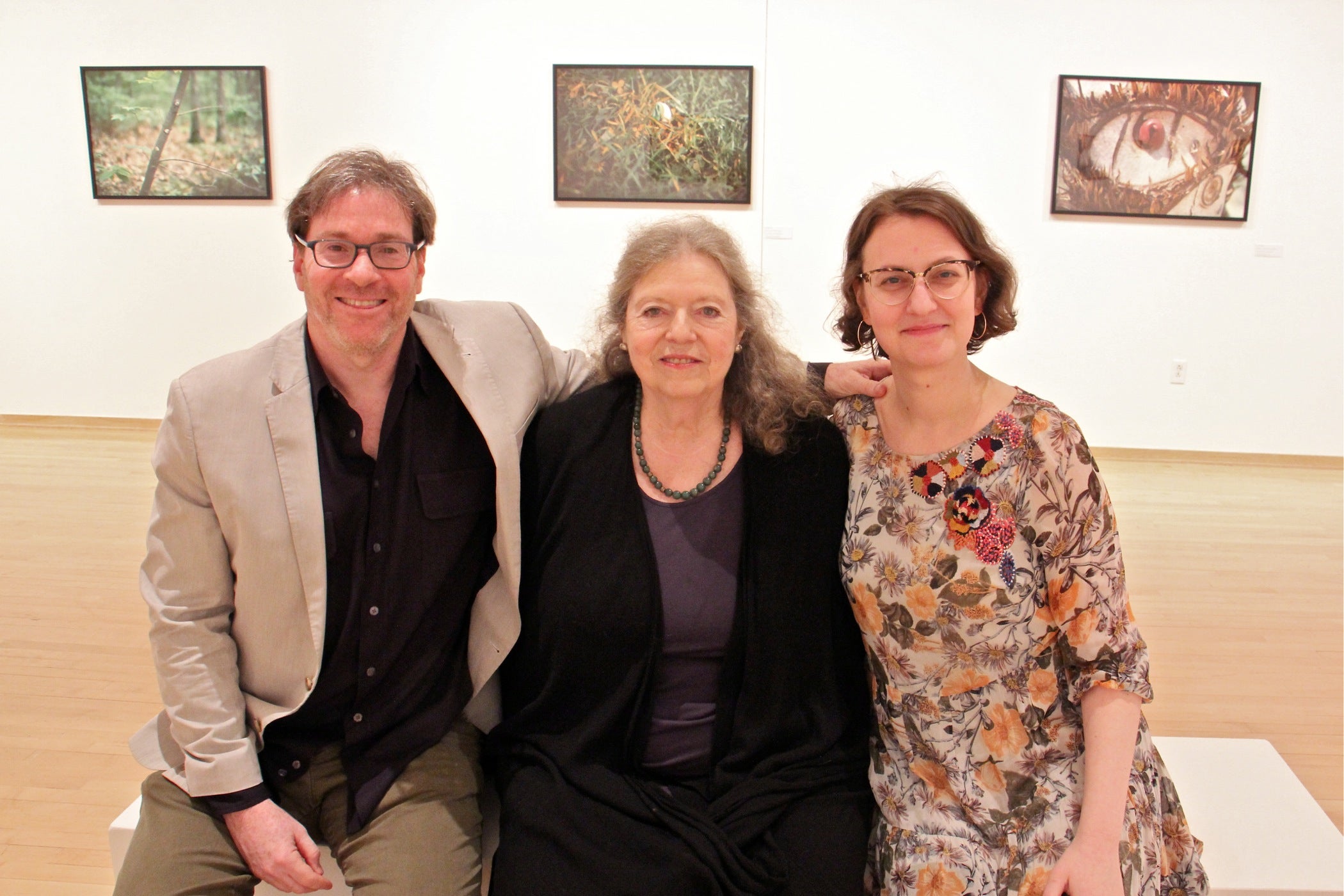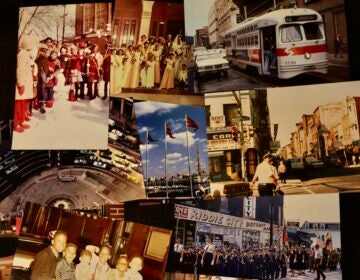Unknown photos by feminist artist Hannah Wilke debut at Temple University
A series of unknown images by the 1970s radical feminist artist are on view at the Tyler School of Art’s Temple Contemporary gallery.
Listen 2:09
In an untitled photograph from the Gum in the Landscape series, ca. 1975, Hannah Wilke places a chewing gum sculpture on a tree branch. (Hannah Wilke Collection & Archive, Los Angeles/© Scharlatt, Licensed by VAGA at ARS, NY)
The art gallery at Temple University, Temple Contemporary, is showing never-before-seen work by a prominent artist who died 26 years ago.
Hannah Wilke was a radical feminist artist who was most popular in the 1970s, when her photography and performance work often featured sexually provocative images of herself. Her most iconic work was a series of black-and-white photographs of her own nude body stuck with little wads of chewing gum shaped into tiny vulvas.
She died of cancer almost 20 years later, in 1993, at age 52.
“Hannah Wilke – Sculpture in the Landscape” features color photography shot in 1976 but never presented. In the series, Wilke placed those little chewing gum vulvas into natural environments, onto tree branches and flower petals.
In the 1960s and ’70s, some women artists looked at the long arc of art history, with its countless examples of phallic imagery, and asked: What if that history could be countered with more feminine symbols?

“Hannah had a passion for creating vaginal forms,” said her sister, the poet Marsie Scharlatt. “That was part of feminism in the ’60s. Hannah did it quite a bit. She liked to mark the world with women.”
Scharlatt, along with her son Andrew Scharlatt, is the heir and caretaker of the Wilke archive, which contains letters, photographs, sculptural models, and performance props created by Wilke.
Andrew Scharlatt remembered, as a kid, helping his aunt’s practice by chewing countless sticks of gum.
“If she needed someone to chew gum, I and my brother and sister would be the people who did it,” he said. “Chewing gum is fun, and she needed someone to do it.”
Who did the chewing was important to Wilke, because the chewers’ saliva would remain in the gum vulva and thus become part of the work. Andrew is identified in the titles of some works.
There is a whole aspect to Wilke’s thinking about feminism and art history here that was never presented publicly. The series of natural tableaus featuring wads of chewing-gum vulvas was a way of celebrating the female gender without explicitly sexualizing it.
Unlike her well-known photos in which she poses herself in pinup-girl style, Wilke’s body never appears in these photographs, except for one where her shadow falls into frame.
No one ever saw these works, until now.
“I, like many others, first learned of Wilke and her work in relationship to the innovative performances and photographs that she did exposing her body,” said Lauren Rosenblum, a recent Tyler graduate and current doctoral candidate in art history at the City University of New York. She who wrote an essay for the exhibition catalog.
“I wanted to think about how she may have thought through beauty by considering the landscape,” Rosenblum said.

Academic opportunity
These pictures expand the concept of injecting feminist imagery into art history by referencing the long tradition of landscape art, outside the context of nude portraiture.
Wilke never had the photo negatives printed. Though the artist did leave instructions that some of her work could be replicated as a certain number of editions, she never left such instructions for this landscape series.
These pictures are not the only work in the Wilke archive that has never been seen publicly. For years, Andrew and Marsie Scharlatt discussed the ethical dilemma of exhibiting work the artist may or may not have wanted shown.
“We debate that, and we wonder if we’re doing the right thing,” said Andrew Scharlatt. “But in this case, it feels right to have this show come about.”
That’s because the photography series was clearly made with intentionality and an aesthetic vision, he said, and the exhibition was created at the invitation of Wilke’s alma mater, the Tyler School of Art
The director of Temple Contemporary, Robert Blackson, said Temple is a research university, and these heretofore unknown photographs present an academic opportunity.
“I feel they made the right decision,” Blackson said. “That represents a gap in scholarship. If more people were aware of this work, it would further enrich scholarship being made around Hannah’s practice.”
The exhibition will be on view until July 12. There are currently no plans to present it anywhere else.
WHYY is your source for fact-based, in-depth journalism and information. As a nonprofit organization, we rely on financial support from readers like you. Please give today.





